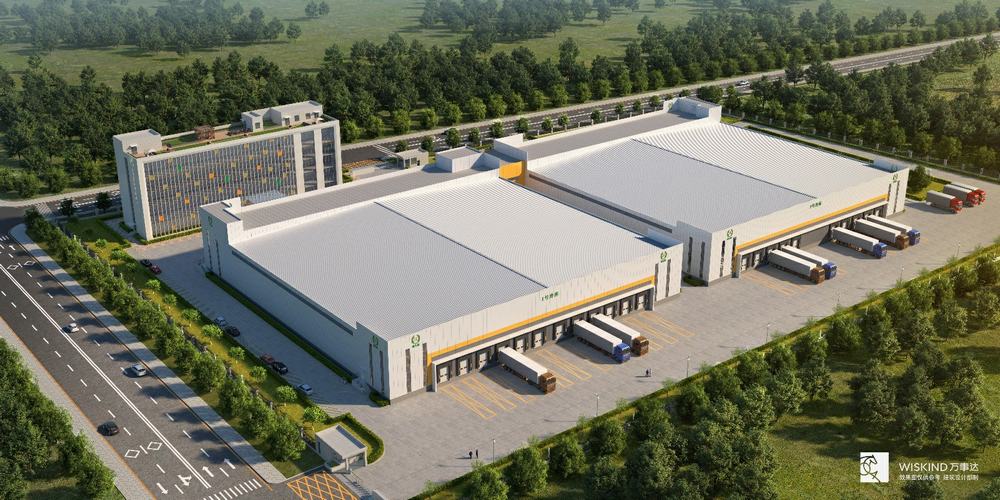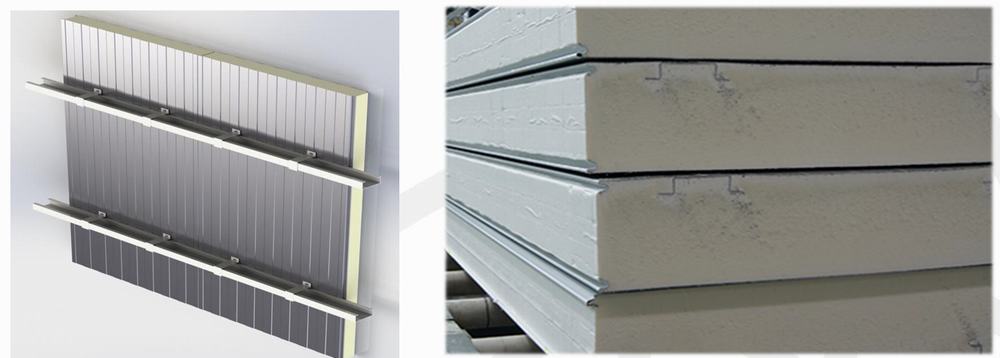Brand: WISBUILD
Product origin: Shandong, China
Delivery time: 30-40 days
Supply capacity: 20000 meters/month
If you are looking for the highest quality steel structure supplier, please contact us and our engineers will provide you with a professional quotation plan.
1 Descriptions of Low-temperature Cold Storage Warehouses for Meat and Fish:
| Descriptions | Low-temperature Cold Storage Warehouses for Meat and Fish |
| Refrigeration unit | Brand compressor |
| Refrigeration type | Air cooled/water cooled/evaporation cooled |
| Refrigeration | R22,R404a,R447a,R448a,R449a,R507a refrigerant |
| Defrost type | Electric defrosting |
| Voltage | 220V/50HZ,220V/60HZ,380V/50HZ,380V/60HZ,440V/60HZ optional |
| Panel | Polyurethane PU PIR PUR insulation panel,40kg/m3 |
| Panel thickness | 50mm,75mm,100mm,150mm,200mm,250mm,300mm |
| Type of door | Hange door,sliding door,double swing electric sliding door,truck door |
| Temp of room | -60ºC~+20ºC |
| Function | fruit,vegetable,flower,fish,meat,chicken,medicine,chemical,electronics,etc |
| Fittings | All necessary fitting are included optional |
| Place to assemble | indoor/outdoor(concrete construction building/steel construction building) |
2 Details of Cold Storage Rooms:
Cold rooms artificially control and maintain temperature for freezing and storage. Temperature isn’t always lower is better; different items require specific ranges. Frozen cold storage widely used in fruit, vegetable, food, fish, meat, cold drinks, ice cream factories. Freezer temperatures generally range from -15°C to -35°C, preserving quality and extending shelf life. Carefully controlling temperature minimizes spoilage, manages inventory, and provides fresh, safe products. Appropriate cold room temperatures determined by stored items’ requirements, enabling effective preservation across various industries.
| Cold Room Panels: | |
| Panels thickness | Temperature inside and outside cold room |
| 75mm | -5~25ºC |
| 100mm | -15~25ºC |
| 150mm | -25~25ºC |
| 180mm | -35~25ºC |
| 200mm | -50~25ºC |
Cold storage rooms find extensive applications across diverse industries, including food, supermarkets, hotels, aquatic products, pharmaceuticals, biologics, chemicals, industrial, and mining enterprises. These temperature-controlled environments offer customizable solutions tailored to customer specifications and unique storage needs. Constantly striving for excellence, cold storage providers possess the capability to satisfy specialized requirements, ensuring customer satisfaction. With meticulous attention to detail and adaptation to individual demands, these cold rooms facilitate effective preservation and storage, catering to the distinct needs of each industry’s products or materials. Delivering optimal temperature regulation and unwavering quality, cold storage solutions empower businesses with reliable and tailored cold chain management.
| Cold room function | Designed temperature range |
| Fresh keeping | 0°C~+ 5°C |
| Quick freezing/blast freezing | -40°C~-35°C |
| Processing area | +2°C~+8°C |
| Pre-cooling room/chilling room | +3°C~+2°C |
3 Cold Room Installation Sites:

Installing a cold room involves a meticulous process to ensure optimal temperature control and operational efficiency. Site preparation entails constructing a well-insulated enclosure with vapor barriers to minimize thermal bridging. Refrigeration systems, including evaporators, condensers, and compressors, are meticulously integrated, utilizing environmentally-friendly refrigerants. Precise temperature monitoring and control mechanisms are implemented, enabling accurate regulation within the desired range. Shelving and racking solutions are strategically designed for maximizing storage capacity while facilitating efficient organization. Specialized flooring, lighting, and ventilation systems are incorporated to maintain ideal conditions and comply with safety regulations. Upon completion, comprehensive testing and calibration ensure the cold room operates within specified parameters, delivering reliable temperature-controlled storage.
4 Cold Room Project Cases:


Cold rooms have proven their effectiveness in various industrial project cases. A prominent food processing facility implemented a large-scale cold room to maintain optimal temperatures during production and storage of perishable goods. The insulated enclosure, coupled with precise refrigeration systems, ensured product freshness and extended shelf life. In a pharmaceutical research laboratory, a specialized cold room provided a controlled environment for storing temperature-sensitive biological samples, enabling critical experiments and studies. A logistics company integrated multiple cold rooms within their distribution center, streamlining the cold chain management of frozen and chilled products. With customized racking systems and real-time monitoring, these cold rooms facilitated efficient inventory handling while maintaining product integrity.
5 Low-temperature Cold Storage Warehouse for Meat and Fish Q&As:
1. What is a low-temperature cold storage warehouse for meat and fish?
A low-temperature cold storage warehouse for meat and fish is a specialized facility designed to store meat and fish at low temperatures. The temperature is typically maintained between -18°C and -25°C, and the humidity is controlled between 85% and 95%.
2. What are the advantages of using low-temperature cold storage warehouses for meat and fish?
-Extended shelf life: Low temperatures inhibit the growth of bacteria and microorganisms, extending the shelf life of meat and fish.
-Preservation of quality: Low temperatures help maintain the color, texture, and nutritional value of meat and fish.
Reduced spoilage: Low-temperature cold storage can reduce spoilage of meat and fish,提高经济效益.
3. What are the design requirements for low-temperature cold storage warehouses for meat and fish?
-Thermal insulation: The walls, roof, and floor of the warehouse should have good thermal insulation properties to minimize heat loss.
-Refrigeration system: The warehouse should be equipped with a suitable refrigeration system to ensure that the temperature and humidity inside the warehouse meet the requirements.
-Air circulation: The warehouse should maintain good air circulation to prevent condensation from accumulating.
4. How to manage a low-temperature cold storage warehouse for meat and fish?
Temperature monitoring: The temperature and humidity inside the warehouse should be monitored regularly and recorded.
Sanitation management: The warehouse should be cleaned and disinfected regularly to prevent bacterial growth.
In-and-out storage management: The in-and-out storage of meat and fish should be strictly controlled, and relevant records should be kept.
5. What are the common problems with low-temperature cold storage warehouses for meat and fish?
-Unstable temperature: This may be caused by a malfunction of the refrigeration system, poor thermal insulation, or poor air circulation.
-Frosting: This may be caused by high humidity inside the warehouse or poor air circulation.
-Bacterial growth: This may be caused by poor sanitation management in the warehouse.













